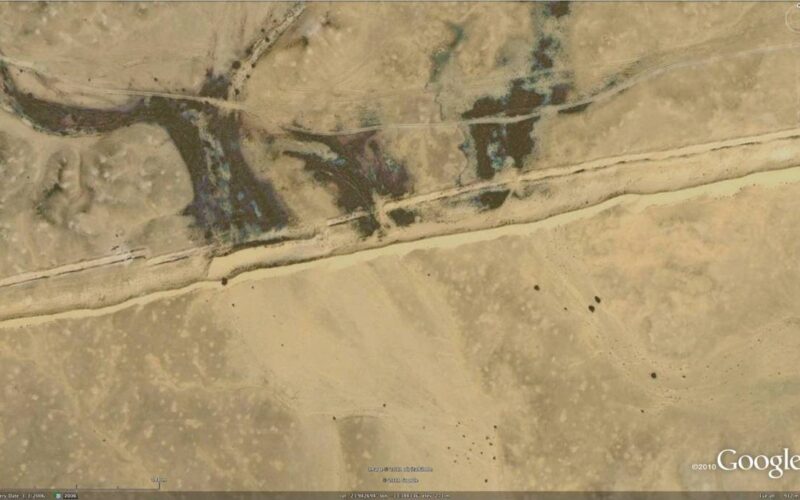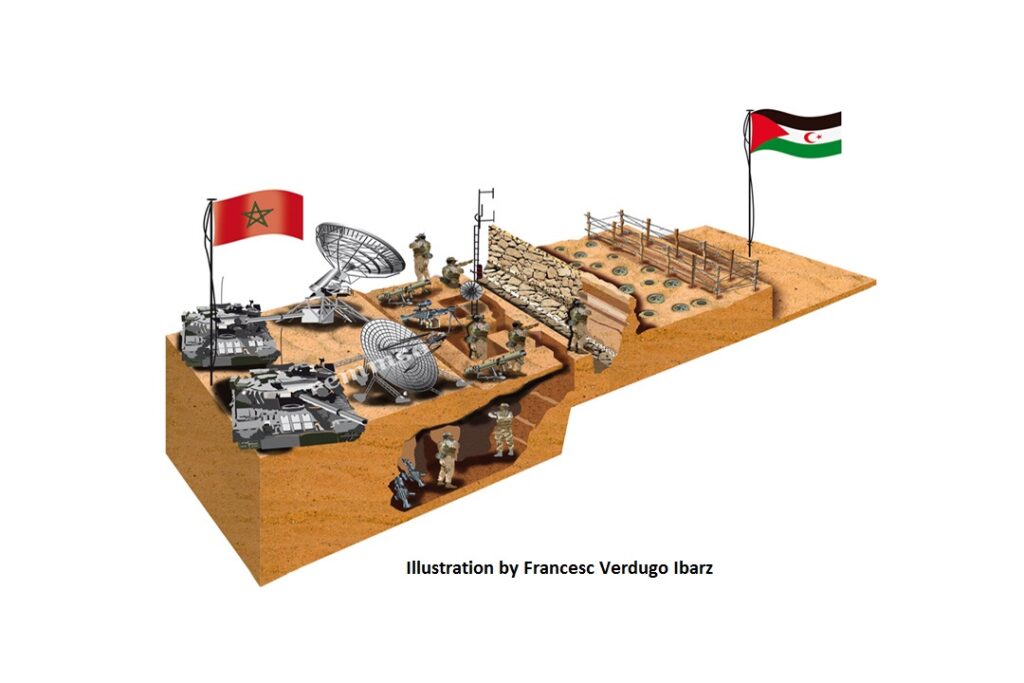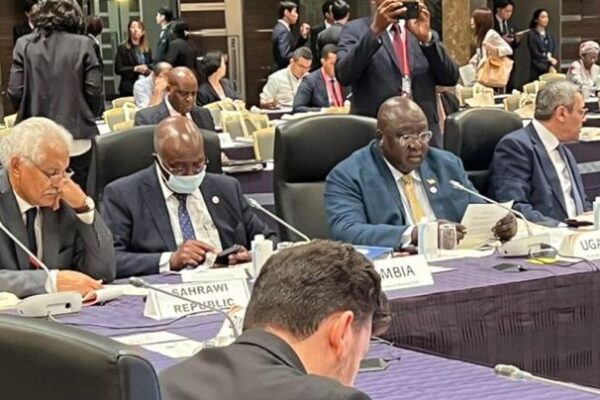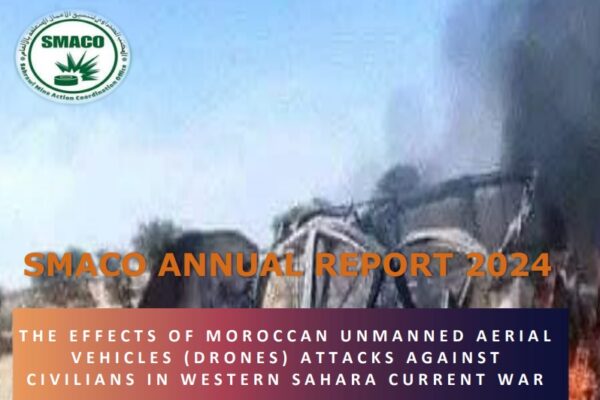The Moroccan Military Wall of Shame

Throughout history, many walls were built for different purposes, mainly as means of protection and defence. Although the Moroccan wall in Western Sahara (also referred to as the “berm”) was clearly constructed as a defensive barrier, it is very different from other known defensive walls not only in terms of its magnitude and structure but also due to its illegal nature (being built in an occupied territory) and destructive capabilities and enduring impacts.
In the history of the conflict in Western Sahara, the end of the 1970s was marked by intense fighting between Moroccan forces and the Sahrawi army. During those confrontations, the Moroccan forces, despite their superiority in numbers and military power, had many military defeats. In order to stop the attacks of the Sahrawi army, King Hassan II of Morocco, with the help–according to several sources–of French, American and Israeli military advisers, ordered the construction of a huge line of defensive walls whose construction lasted seven years.
The construction was carried out progressively in 6 phases, each of which expanded the territory occupied by the Moroccan army. Between August 1980 and April 1987, six walls of different lengths were built. With the construction of the sixth wall, a long line of fortifications of about 2,720 km long was established. It extends from southern Morocco to the south-western tip of Western Sahara. It is considered “the greatest functional military barrier in the world”, according to international analysts.

Structure of the Wall of Shame
The wall is a series of sand and stone walls of two to three meters high; it extends along topographic high points (such as peaks and mountains) throughout the Sahrawi Territory. It is protected by bunkers, ditches, trenches, barbed wire, mines and electronic detection systems and defended by more than 160,000 Moroccan soldiers. Over every 5 kilometres of the wall, there is a military base of about 100 Moroccan soldiers. About four kilometres behind each major observation post, there is a mobile rapid intervention force (with armoured vehicles, tanks, etc.) A series of overlapping fixed and mobile radars, with a range of 60 to 80 km, are placed along the wall. According to some sources, Morocco spends $ 2 million daily to maintain the wall..
Since it was built in the early eighties, the wall has had many negative consequences on different aspects of the life of the Sahrawi civilian population. With regard to its political and legal consequences, the wall isolates and separates the occupied territories form the Sahrawi liberated areas and from the whole world. It also serves to consolidate the occupation of the Territory as an irreversible fact and to create a “fait accompli” on the ground at the same time as Morocco claims to have complete control over Western Sahara denying in this way the existence of liberated territories administered by the Frente POLISARIO and the Sahrawi Republic (SADR).

In terms of the economic impact of the wall, it is known that the Moroccan economy is becoming increasingly dependent on the illegal plundering of the natural resources in the occupied territories of Western Sahara (phosphate, fisheries, minerals, agriculture, etc.), which provides employment for the vast majority of Moroccan settlers in the Territory. Sahrawi citizens who live under occupation suffer marginalisation and deprivation of their basic socio-economic rights. The heavily mined areas have become uninhabitable with little economic productivity and this situation has greatly affected the desert-linked livelihood of many Sahrawis. The Moroccan wall also represents a giant protection behind which Morocco persists in its systematic plundering of the natural resources of the Territory.
As for its humanitarian, social, cultural and psychological impact, the Moroccan wall is a wall of separation par excellence because it damages the social fabric of Sahrawi society and divides Sahrawi families between the occupied areas and the refugee camps in south-western Algeria. Landmines endanger the traditional Sahrawi lifestyle linked to the desert and prevent divided Sahrawi families from transmitting to their children the traditions and cultural values of their society. The wall also transforms the occupied territories into a large prison in which all forms of physical and psychological repression are systematically practiced with impunity. This situation has contributed to aggravating the sense of isolation, alienation and vulnerability among Sahrawi population in those areas.
In terms of its impact on security, the wall represents a continuing threat to regional security owing to the 7 million mines laid along the wall in addition to large quantities of explosive remnants of war and cluster munitions. Besides, the involvement of Moroccan military in the smuggling of prohibited goods, drug trafficking and illegal immigration from and to the Sahrawi occupied territories represents a serious threat to the security of the whole region.

In terms of its environmental impact, the construction of the wall and the infrastructure that it contains have led to profound changes in the surface of the land that has become more vulnerable to wind erosion and water stagnation. Due to its structure, the wall acts as a barrier to the flow of water into the areas southeast of the wall, as the above satellite image shows. This situation has increased desertification in those areas and will clearly have a long-term impact on the ecosystem of the whole region.
As is well known, Western Sahara is still a Non-Self-Governing Territory that is subject to a decolonisation process by the UN. As confirmed by the International Court of Justice in 1975 and the UN Legal Counsel in 2002, Morocco exercises neither sovereignty nor administering power over the territory, and it is simply an occupying power in Western Sahara. The legal implications of this situation are twofold. First, the applicability of the Fourth Geneva Convention and its Additional Protocol I to Western Sahara as an occupied territory. Second, as an occupying power, Morocco is obliged to comply with the relevant rules of international humanitarian law and other human rights instruments.
In consequence, the construction of the Moroccan wall in Western Sahara is clearly illegal because it implies the de facto annexation of the Sahrawi territory by the occupying power, Morocco, which is prohibited under the rules of international humanitarian law. It is also unlawful because of its devastating political, legal, economic, humanitarian, social, cultural and environmental consequences on the Sahrawi population. In short, the construction of the wall is illegal because it creates a “fait accompli” on the ground and thus constitutes a serious obstacle to the exercise by the Sahrawi people of their inalienable right to self-determination and to peace and economic and social development of the whole Territory.
Source: The International Campaign against the Wall of Shame ion Western Sahara






